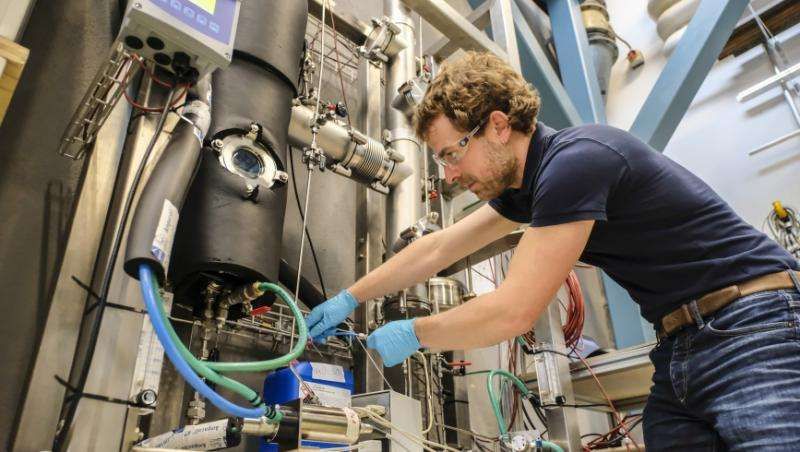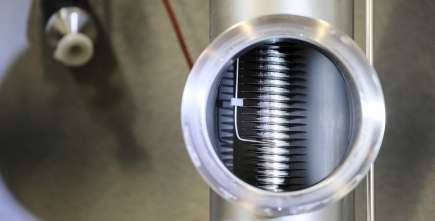Sodium Hydroxide For Thermal Energy Storage
Published on by Dan Grech, Director at Global OTEC Resources in Technology
Researchers have been testing a theory that Sodium Hydroxide could be used to store solar energy collecting during days or seasons as a form of ‘natural battery’.

Quite simply the hypothesis stems from pouring water into a beaker containing solid or concentrated sodium hydroxide (NaOH) which results in an exothermic reaction – chemical energy is converted to heat.
Sodium hydroxide solution is highly hygroscopic and able to absorb water vapour and the condensation heat obtained as a result warms up the sodium hydroxide solution even more.
Empa researchers Robert Weber and Benjamin Fumey have been working for years to see could if this experiment be replicated on a scale capable of storing enough energy for a single-family household.
They used an insulated sea container as an experimental laboratory on Empa’s campus in Dübendorf – a safety precaution as concentrated sodium hydroxide solution is highly corrosive. This failed. Instead of flowing correctly around the heat exchanger, however, the thick sodium hydroxide solution formed large drops. It absorbed too little water vapour and the amount of heat that was transferred remained too low.
They tried again and the test was a success. They used a viscous storage medium to trickle along a pipe in a spiral, absorb water vapour on the way and transfer the generated heat to the pipe and found the optimum temperatures: 5°C to 10°C is required to drain the store.

Heat exchangers from instant water heaters provided the solution: the sodium hydroxide solution spirals along a pipe, absorbs water vapor and emits heat. Credit: Swiss Federal Laboratories for Materials Science and Technology
While replenishing the store, the 30% “discharged” NaOH solution trickles downwards around the spiral pipe. Inside the pipe flows 60°C water. The water from the solution evaporates; the water vapour is removed and condensed. The condensation heat is conducted into a geothermal probe, where it is stored. The sodium hydroxide solution that leaves the heat exchanger after charging is concentrated to 50% again, i.e. “charged” with thermal energy.
Fumey explains that the method enables solar energy to be stored in the form of chemical energy from the summer until the wintertime. “And that’s not all: the stored heat can also be transported elsewhere in the form of concentrated sodium hydroxide solution, which makes it flexible to use.”
As more research is conducted in this area, there will no doubt be questions and speculation about how charging sodium hydroxide could be used to power thermal desalination in places with seasonally low solar irradiance.
What do you think about the initial findings? Do you think this method is scalable to work at a level that could work for small communities? Do you think it would be cost-effective?
Source: Future Desalination
Media
Taxonomy
- Water
- Thermal Desalination
- Solar Desalination
- Desalination Plant
- Battery
- Solar Power
- Desalination